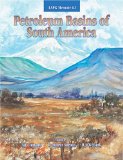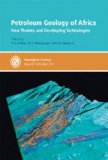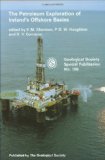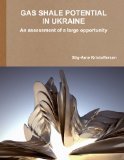
|
Arctic Petroleum Geology
The vast Arctic region contains nine proven petroleum provinces with giant resources but over half of the sedimentary basins are completely undrilled, making the region the last major frontier for conventional oil and gas exploration. This book provides a comprehensive overview of the geology and the petroleum potential of the Arctic. Nine papers offer a circum-Arctic perspective on the Phanerozoic tectonic and palaeogeographic evolution, the currently recognized sedimentary basins, the gravity and magnetic fields and, perhaps most importantly, the petroleum resources and yet-to-find potential of the basins. The remaining 41 papers provide data-rich, geological and geophysical analyses and individual oil and gas assessments of specific basins throughout the Arctic. These detailed and well illustrated studies cover the continental areas of Laurentia, Baltica and Siberia and the Arctic Ocean. Of special interest are the 13 papers providing new data and interpretations on the extensive, little known, but promising, basins of Russia. |
|
Petroleum Basins of South America
This is a monumental memoir. Buy this book if you want to better understand the geology of South America, where exploration efforts are expanding because of world-class discoveries and improving fiscal terms. Memoir 62 covers the regional setting of an entire continent: Paleozoic basins, Mesozoic rifts, Andean basins, and northern South America.
|
|
The Oil and Gas Habitats of the South Atlantic
The South Atlantic petroleum province contains 4.3% of the world's discovered oil reserves and 2.4% of the world's discovered gas reserves. It contains a wide range of source rocks, reservoirs and trap types. There is a current sharp rise in reserve additions after technology has allowed for deepwater exploration. This book provides an overview of the geology for an area, which has only a fragmentary English language literature base.
|
|
The Petroleum Geology of Nw Europe: Proceedings of the 5th Conference
Petroleum Geology of Northwest Europe: Proceedings of the 5th Conference provides an extensive review of the significant advances made in understanding the petroleum geology of the Atlantic margin of northwest Europe, of the North Sea and of adjacent areas since the last conference in 1992. In particular, the volumes focus on: - the development and application of 3D seismic, time-lapse ('4D') seismic and other innovative seismic tools; - the ongoing refinement of sequence and other stratigraphic approaches, including the integration of detailed biostratigraphic data; - the development of modelling at both the reservoir and basin scale which can respond to new data acquisition and be used to assess uncertainties at the reservoir scale and scenarios at the basin scale. The two-volume set will be of interest to all geoscientists involved in the exploration for, and development and production of petroleum along the Atlantic margin of northwest Europe, in the 'mature' North Sea and throughout the surrounding areas. |
|
Petroleum Geology of Libya
Libya has the largest petroleum reserves of any country in Africa and since production began in 1961 over 20 billion barrels of oil have been produced. Libya is scheduled to reach the mid-point of depletion of reserves in 2001 and this provides a timely point at which to review the state of petroleum exploration in Libya. A large amount of data has been published on the geology of Libya, but it is scattered through the literature; much of the older data has been superceded, and several of the key publications, especially those published in Libya, are difficult to find. This book represents the first attempt to produce a comprehensive synthesis of the petroleum geology of Libya. It is based exclusively on published data, supplemented by the author's experience gained during ten years work in Libya. The aim of the book is to systematically review the plate tectonics, structural evolution, stratigraphy, geochemistry, and petroleum systems of Libya, and provides valuable new data on fields, production, and reserves. This volume will provide a ready source of reference to individuals and companies who wish to obtain an overview of the petroleum geology of Libya, and will save them the laborious task of sifting through hundreds of publications to find the data they require. |
|
Petroleum Geology of Africa: New Themes and Developing Technologies
As frontier exploration in Africa moves into ever-deeper water and new basins, there is an increasing need to mitigate the high costs by reducing risk. One way of doing this is by drawing on knowledge from other areas. The book includes regional papers ranging from syntheses on a continental scale to details of the salt tectonics of the West African margin. It also addresses the need to continue using technologies to their limits by including papers on topics as diverse as gravity interpretation and fluid inclusion studies. The book provides essential reading for those requiring further insight into the origins of Africa's diverse petroleum systems, and will be key to geologists and geophysicists involved in the exploration for and exploitation of oil and gas throughout Africa. Of particular note in is the supplementary CD containing maps of Africa's petroleum basins classified by age of target reservoir system. |
|
World Atlas of Oil and Gas Basins
World Atlas of Oil and Gas Basins is a fresh and comprehensive treatise of the distribution of the world’s hydrocarbon reserves. The Atlas highlights the geographical, sedimentary and geological features of the basins, using a combination of maps and stratigraphic diagrams to depict the history, prospectivity and commercial production capacity of the reserves on a continental and country-by-country basis. The Atlas is an essential reference source for petroleum geologists and reservoir engineers working in hydrocarbon exploration and production. It is also a valuable and original teaching aid for university graduate and postgraduate courses. The Atlas provides a welcome addition to the global database of the world’s energy resources and is therefore an indispensable source of information for the formulation of future strategies to exploit oil and gas reserves. |
|
Petroleum Exploration of Ireland's Offshore Basins
This book covers a wide range of exploration topics from the regional to the field scale. It provides new information on Neogene to Recent stratigraphy and sedimentation in the North Atlantic. A significant amount of exploration has taken place since the publication of Geological Society Special Publication no. 93 (Petroleum Geology of Ireland's Offshore Basins) in 1995. In this new publication there is a greater emphasis on results from the Atlantic Margin basins and reflection on the course of exploration in the past 5 years. Also, The Proceedings of the 5th Conference (Barbican volumes) of 1999 has a number of papers on the basins of west Ireland but the present volume is more up to date and comprehensive in its coverage of the Irish offshore. The present volume will be complementary to both these previous publications but will stand alone as an integrated volume on the results of all aspects of exploration in the Irish offshore region. The impending declaration of commerciality, and the commencement of development, of the Corrib Gas Field of west Ireland will increase future interest in the region, also adding to this book's value. Readership: Oil industry explorationists and researchers interested in NW European sedimentary basins. Also, research students working on the Mesozoic/Cenozoic basins of NW Europe. Can be used as a reference book for advanced undergraduate students or for postgraduate students taking courses in petroleum exploration or basin analysis. |
|
Petroleum Geology of the Irish Sea And Adjacent Areas
Historically the sedimentary basins to the west of mainland Britain have taken a back seat role in the exploration of the UKCS.Throughout the 1980's the discovery and development of fields in the prolific basins of the North Sea retained both the technical focus and, more importantly, the budget funds of major operators. Consequently, the history of exploration in western areas, and particularly in the East Irish Sea Basin, is one of alternating feasts and famines. In this context, the period of 1990 to1995 represents a major feast, the second such feast in the exploration history of the region. More importantly, a veritable feast both in the volume of hydrocarbons discovered and the apparent advancement of geological understanding. The initial leap forward, made during the mid 1970's in the East Irish Sea Basin, is, however, likely to remain the volumetrically most important. Current workers in these basins owe a great debt to the early pioneers who carried out the initial exploration and simultaneously had to break the mould of traditional North Sea thinking. Ultimately it was the discovery of the giant Morecambe Field in 1974 which proved the value of exploration in the west but the full potential of the area has, we believe, yet to be realised. Witness the efforts of the early 1990's which overturned the 'one field gas basin' paradigm and transformed the East Irish Sea Basin into a mature oil and gas province. This gave impetus to exploration, drew attention to the geological complexity and, in so doing, added more than a dozen fields to the maps of the area including the oil fields of Douglas and Lennox. This book provides a snap-shot of current understanding on the petroleum geology of the East Irish Sea and adjacent areas.We hope that it will prove a platform for further exploration in basins west of Britain. |
|
Gas shale Potential of Ukraine
Ukraine has a formidable gas shale potential within their country. Dnieper-Donets Basin is by far the geological province with the highest potential, however Carpathians and Northern Crimea should not be disregarded in this respect. Gas Shale in the US hasgained momentum over the last decade, and seem to be the catalyst for European interest in Gas Shales. Major international oil and gas companies have stated that Ukraine together with Poland would be the most attractive Gas Shale provinces in Europe. In this book we analyse the Ukraine potential, and give some insight to what this potential could be and what it takes to get it out of the ground. |



































